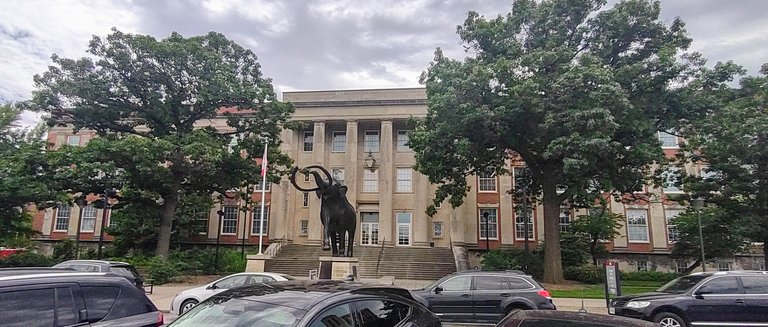
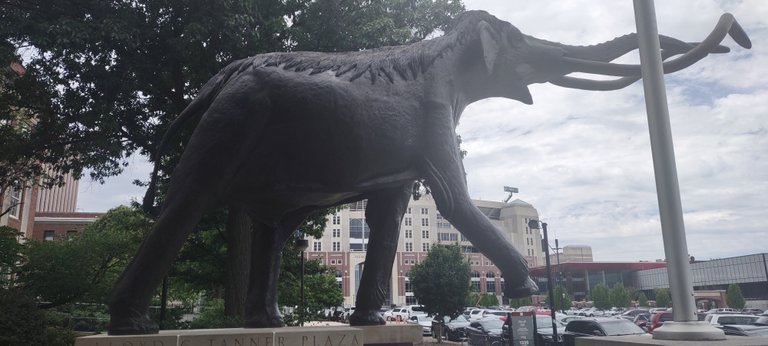
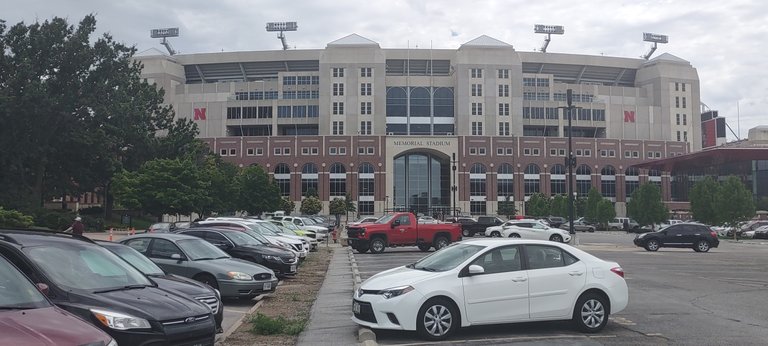
Hello friends and Hivers. Today I take you on journey to a really cool museum I visited on Friday. I had to jump in the car and travel about 65 miles to the city of Lincoln, Nebraska to visit The University of Nebraska State Museum- Morrill Hall. What I seen today was hundreds of fossils. Some native to the state of Nebraska and others from around my country.
So what is up with the the large bronze statue with husks? It's a real scale sized replica of a Columbia Mammoth named Archie. It is the largest fossil specimen of this species in the world. You will see him soon as he displayed here 😊 Interesting fact, mammoth bones and tusks were found about 100 yards from this statue.
This can be a very busy area to visit. You see the front entrance to Veteran's Memorial Stadium is also in the same parking lot. You don't want to visit it on game day or when something big is planned there. The seating capacity of the stadium can sit 85,000 people. If you disregard this warning plan on parking and walking great distances.
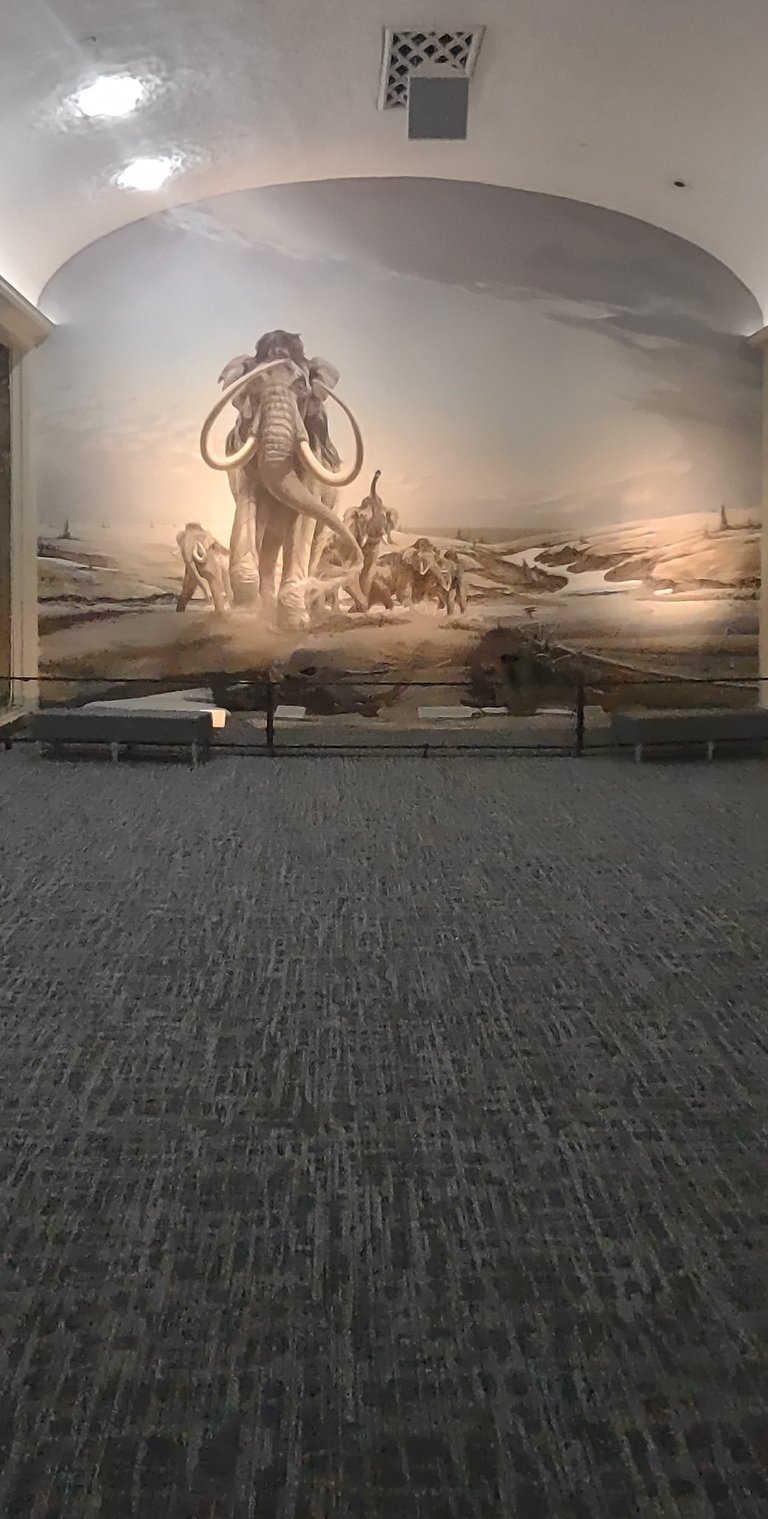
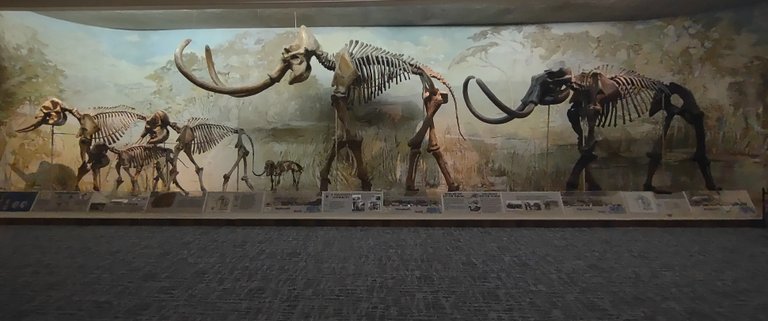
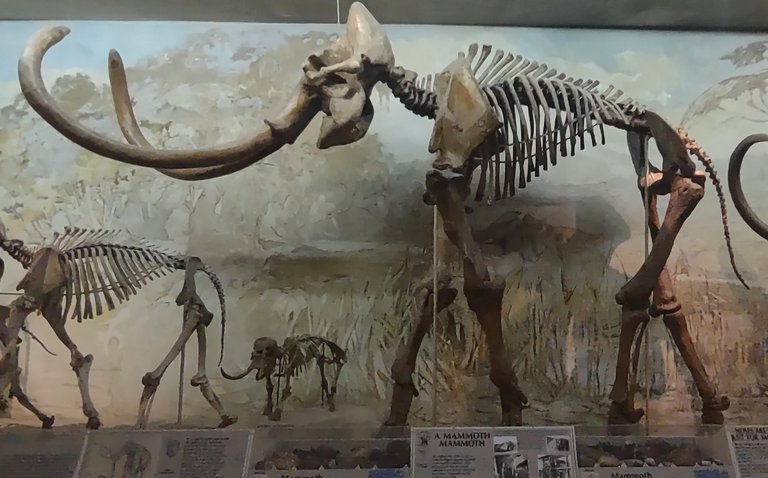
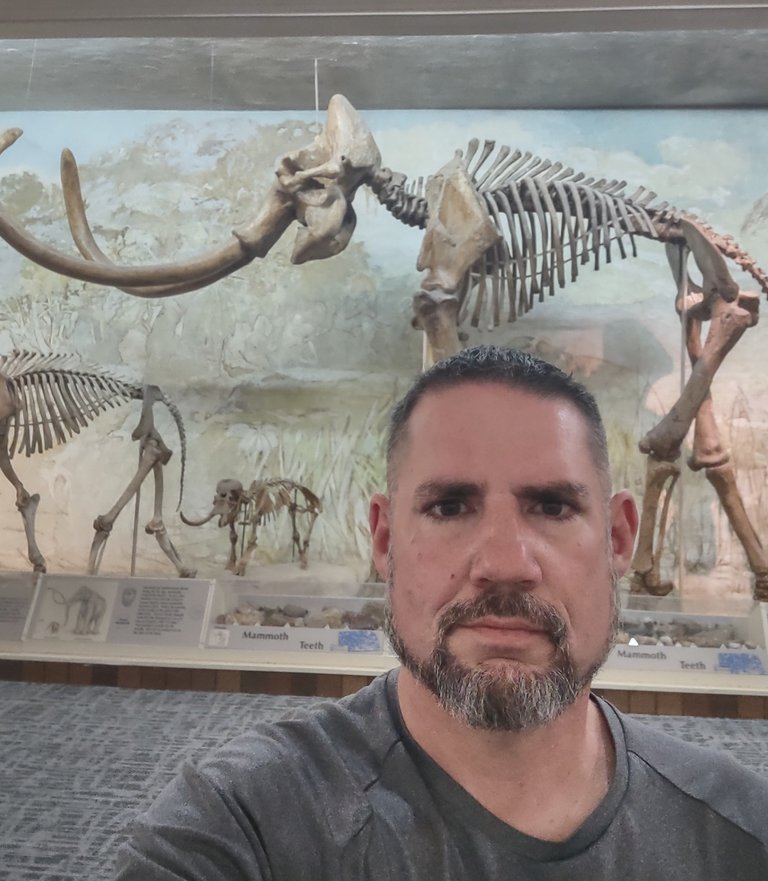
I walk into the museum pay my $10 entrance fee and straight ahead is an exhibit of elephant descendancy. Take a look at these bones and fossils the far left is modern day Asia and Africa elephants.
The center piece is old Archie. He was found in 1922 and his kind roamed the Earth from 1 million years ago to about 10,000 years ago. He stands at over 15 and half feet tall and weighed over 24,000 lbs. That's large and in charge right? Sorry you have to see my mug but how could I have left without a picture with him. Only 3 counties of the 93 counties in Nebraska have not found Mammoth fossils. No wonder it's named the state fossil.
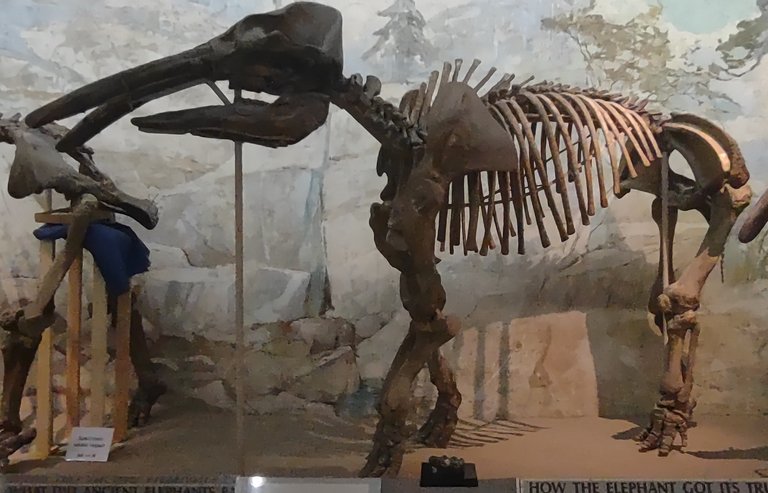 Perfect Tusker
Perfect Tusker
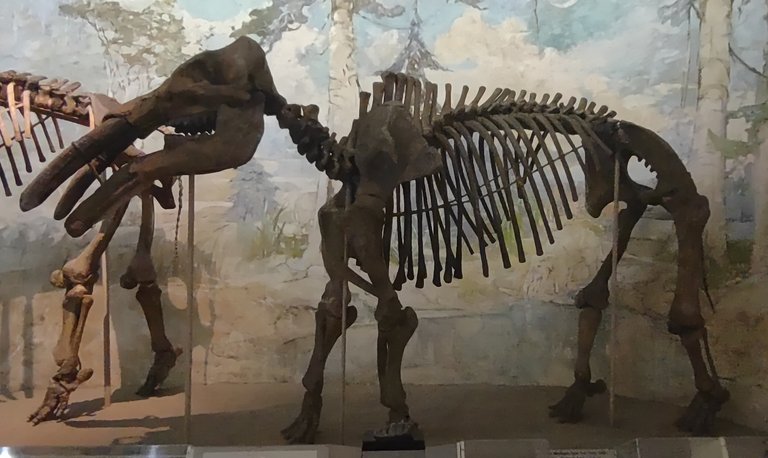 Long Jawed Tusker
Long Jawed Tusker
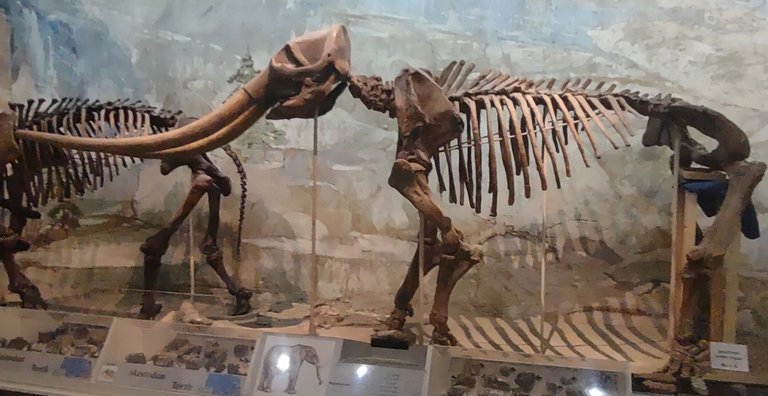 Stegomastodon
Stegomastodon
 American Mastodon
American Mastodon
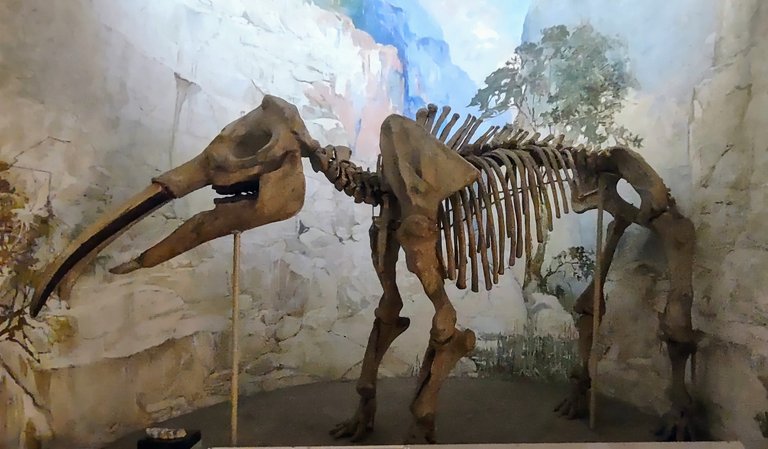 Prod Tusker
Prod Tusker
 Lower Jaw/tusks of a Shovel Tusker
Lower Jaw/tusks of a Shovel Tusker
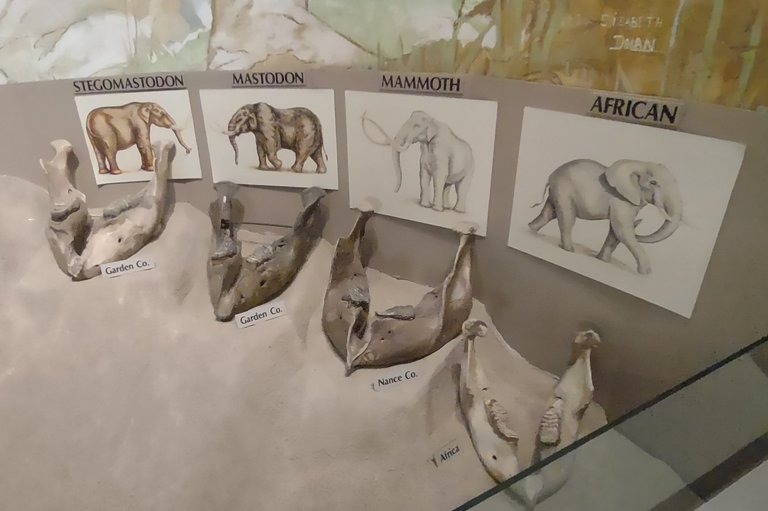 More lower jaws of certain species
More lower jaws of certain species
Above are many of the elephant species that would have roamed in Nebraska as early as 10,500 years ago and as far back as 14 million years ago. Many of these are similar but what's interesting is some of these have lower tusks in additional to upper ones. The four tuskers all ended with the Stegomastodon. The fossil of the Perfect Tusker is the world's only mounted full skeleton of its kind. These species met there decline due to warmer and drier climates as many of the glaciers retreated. It is documented that early North American people also hunted the Mastodons and Mammoths back some10,000 years ago.
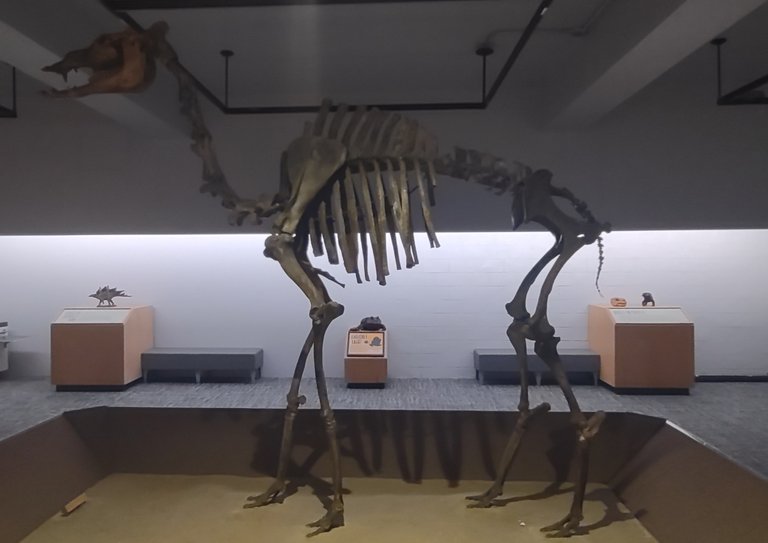
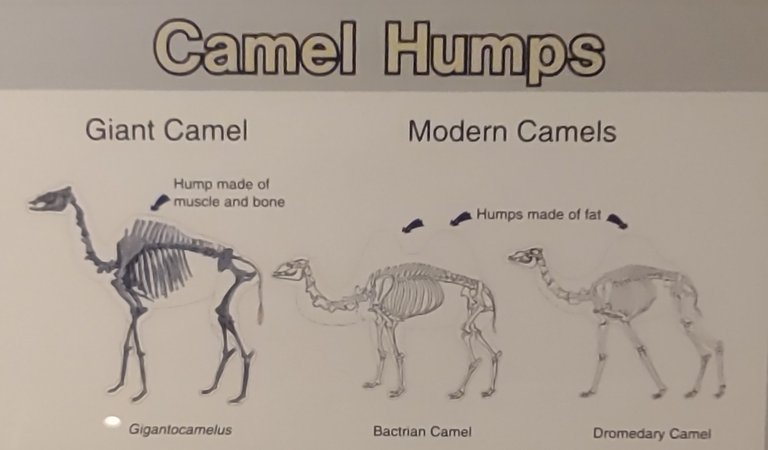
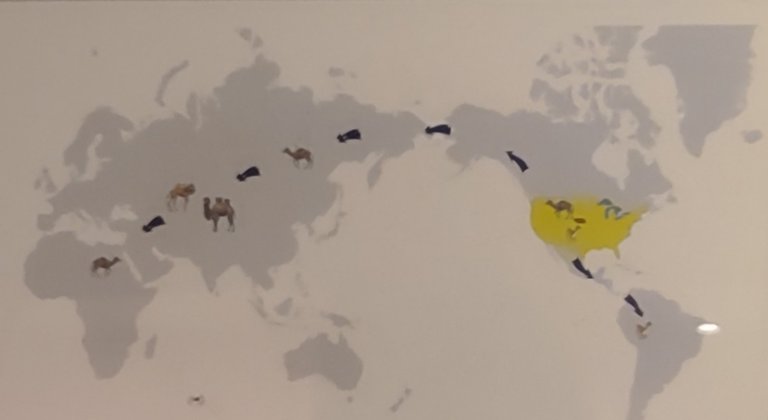
Above we have a giant camel which is much larger than the modern day specie. Modern day camel's humps are derived from fat but the giant camel's are from bone and muscle. From 6 million to 46 million years ago camels only lived in North America. Around 6 million years ago camels migrated to other countries.

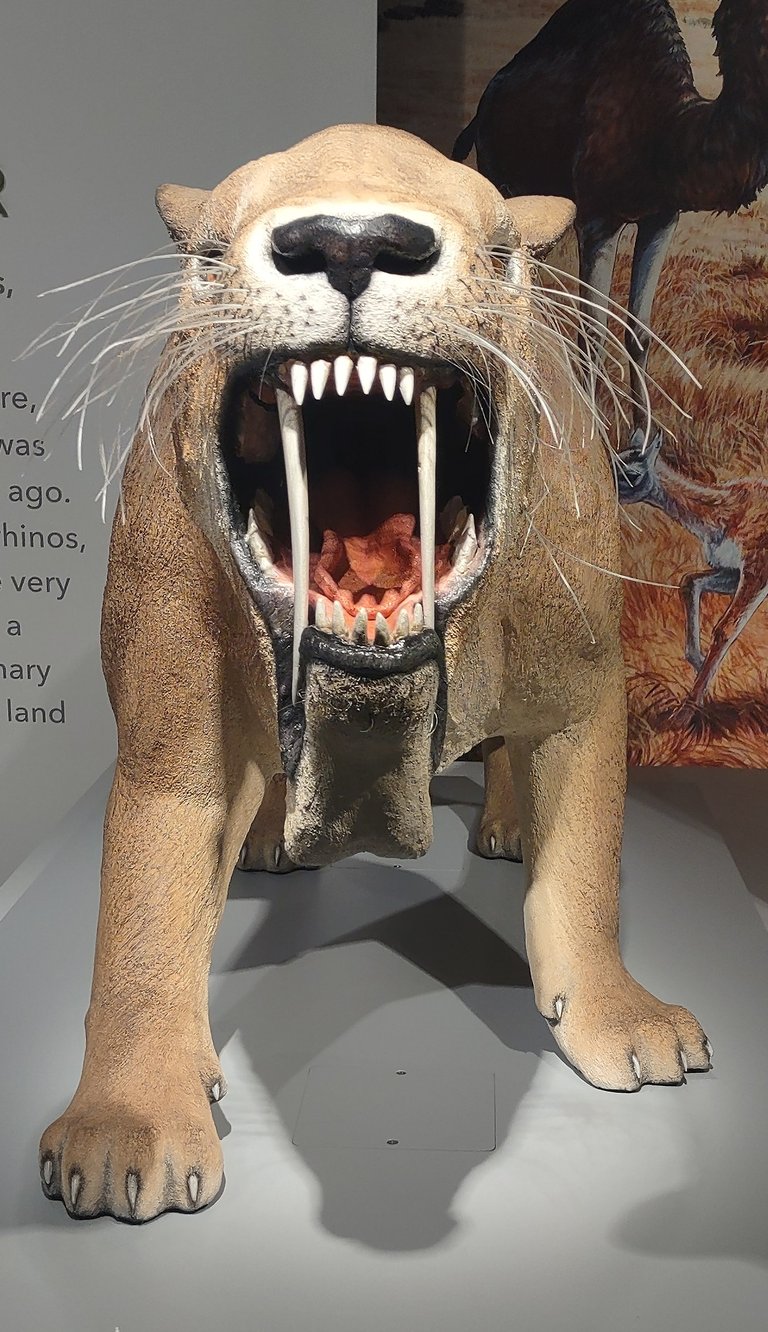
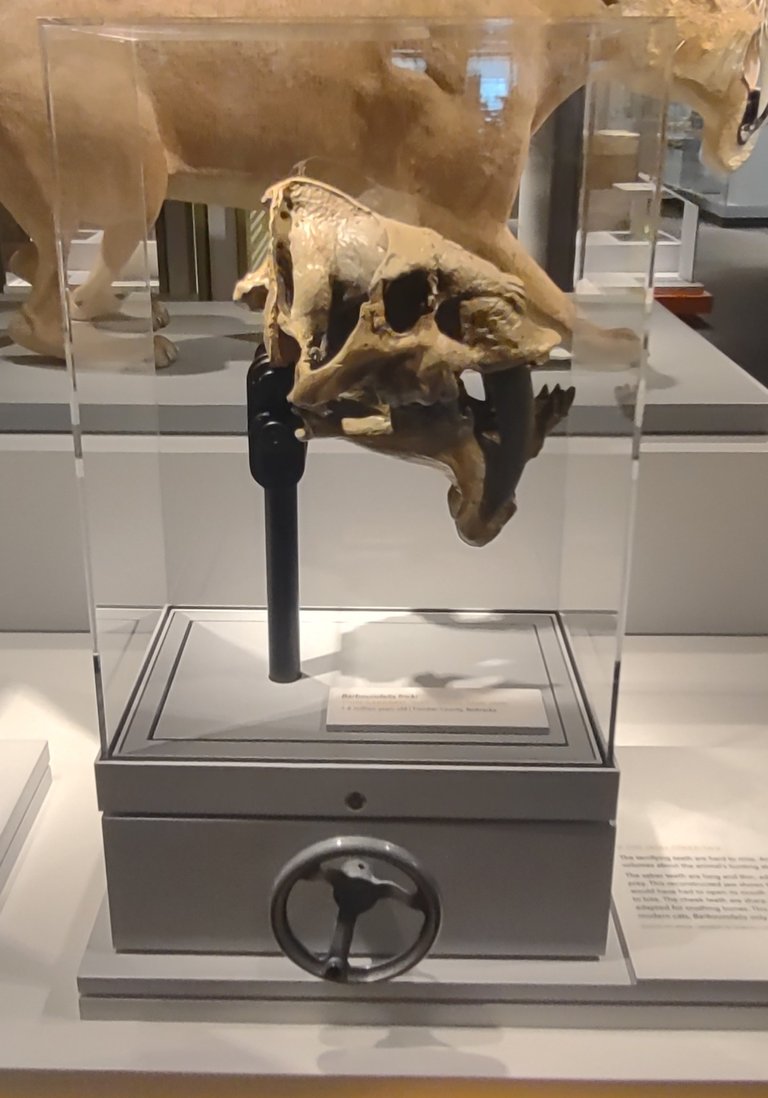
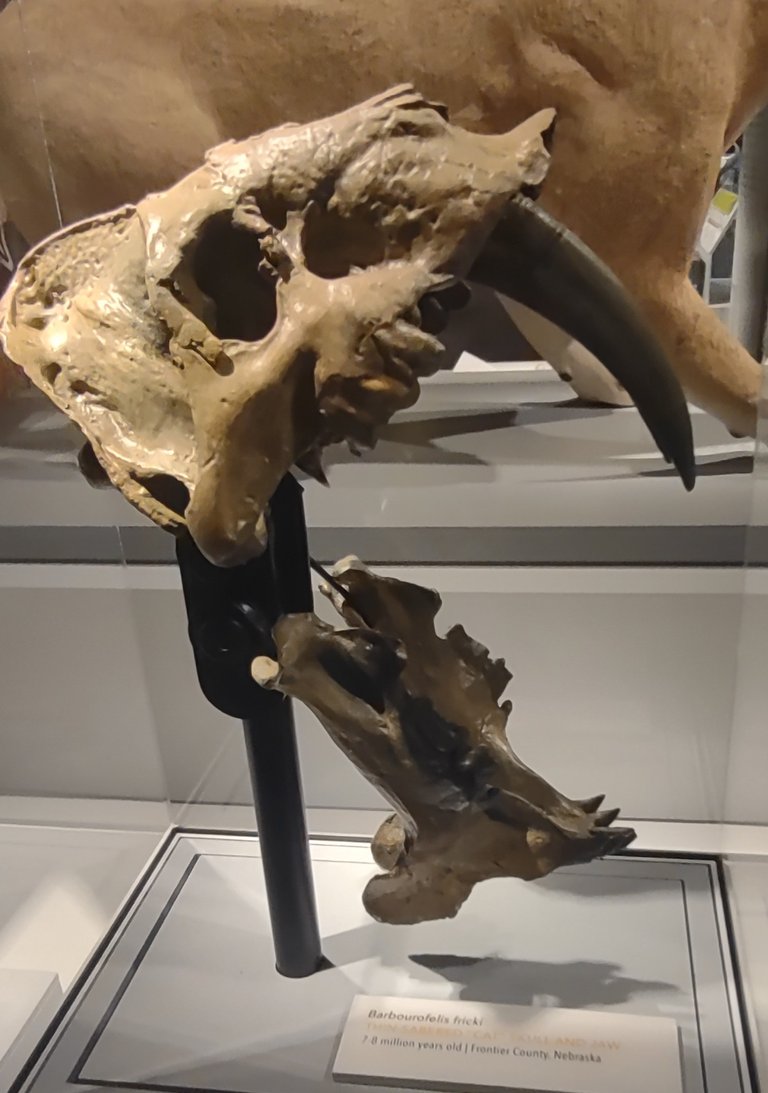
Here we have a bad ass mammal, Sabor Tooth Tiger. At full sized it's about the size of adult male lion. I can't help but to look at him and call him Diego from the animation movie series, Ice Age. I had some fun moving the wheel on the exhibit opening and closing the jaw. Tigers are fierce but this one with the the ability to open up it jaws wider to pierce its prey with it elongated teeth seem a bit more frightening.
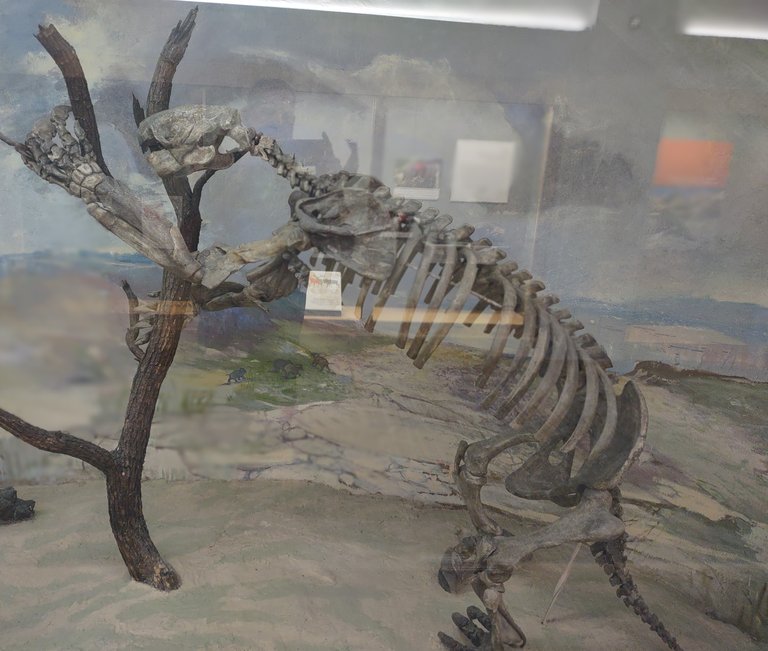
We have a Ground Sloth fossil skeleton above. It lived for millions of years before going extinct about 11,000 years ago. Slow moving but having some size it wasn't on the menu for all predators. I never realized they were of this size. Again I can't help but think it's name is Sid, haha. Yes from the same movie above.
 Bison Evolution
Bison Evolution
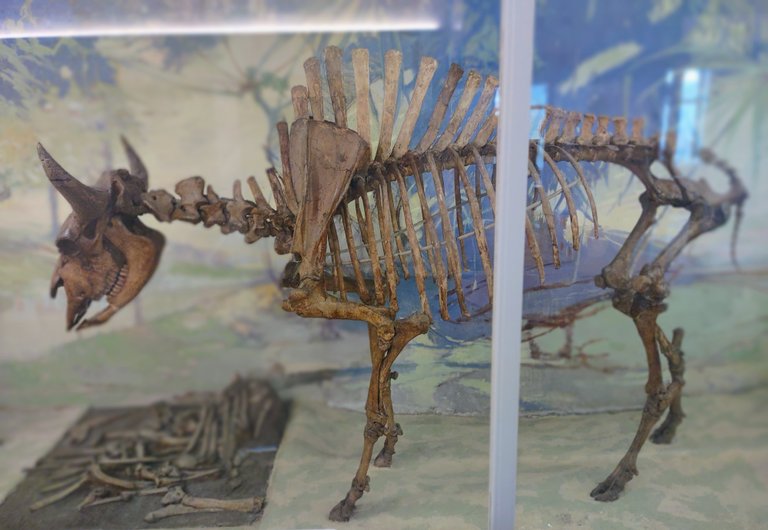 Bison Antiquus- Antique Bison
Bison Antiquus- Antique Bison
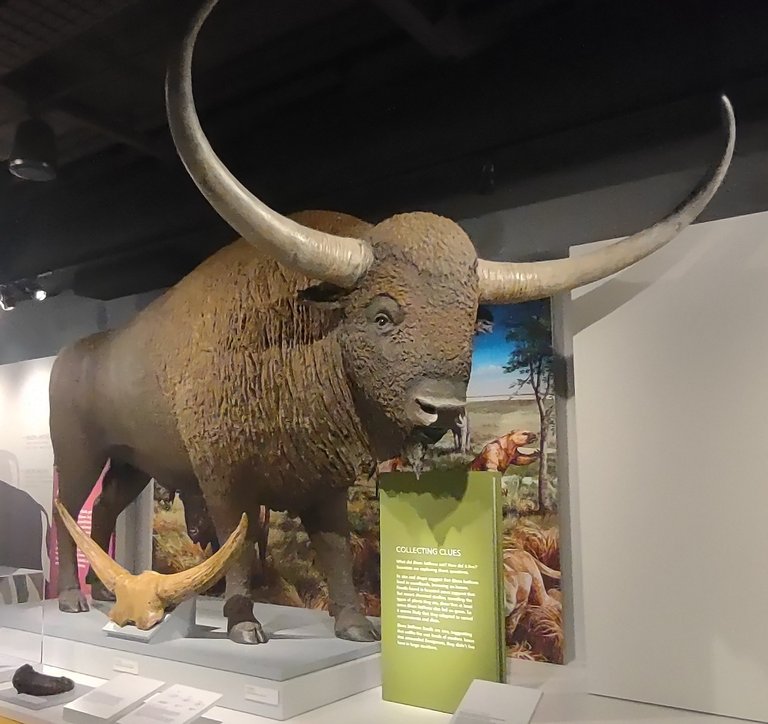 Bison Latifrons- Long Horned Bison
Bison Latifrons- Long Horned Bison
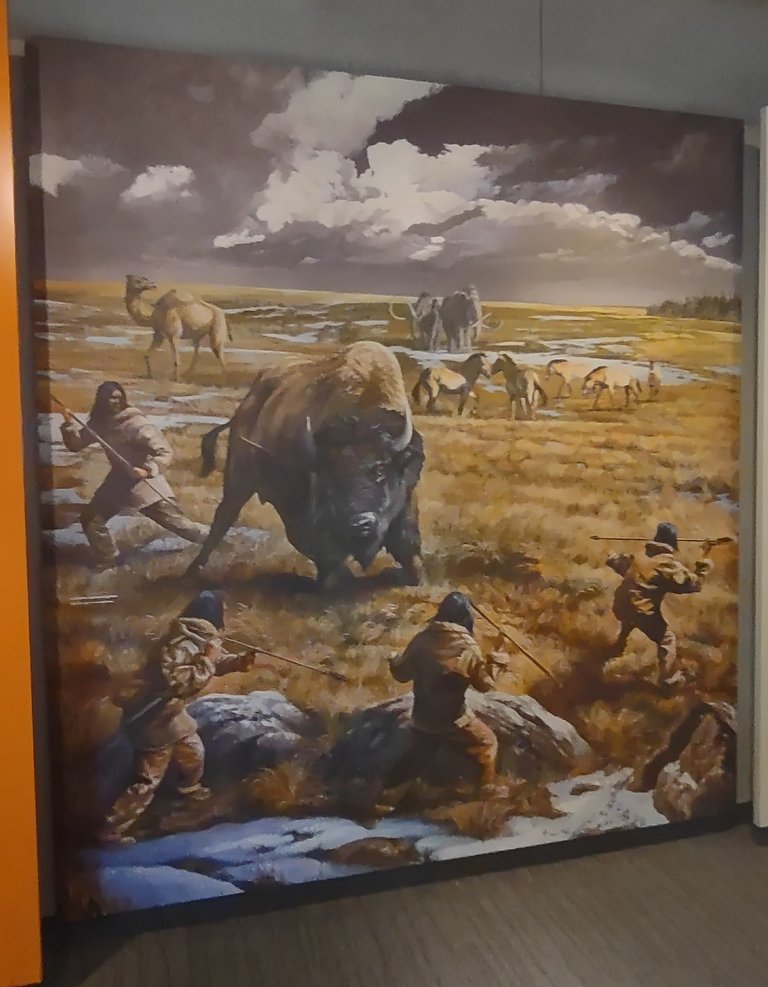
The Bison have been roaming North America for a long time. It's a sad thought that the modern day Bison almost became extinct. The modern day Bison is the smallest followed by the Antique Bison. That leaves the Long Horned Bison the largest and also the oldest. The Antique Bison became extinct about 8000 years ago while the Long Horned Bison went extinct nearly 20,000 years ago. The last photo is a portrait that represents hunting done by the Paleoindian people who hunted a lot of these now extinct mammals in North America between 8,000 to 15,000 years ago.
There is a lot more to share at this museum and I will continue with it at another time. There's more mammals, some dinosaurs, and a little surprise.
Take care, stay safe and have a great rest of your weekend. Until next time!




